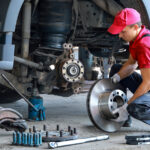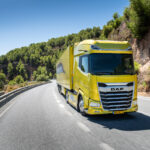Scania’s steel goes green
Scania’s steel goes green
Last month, we revealed that Scania Southern Africa is taking massive green strides when it comes to trucking on this continent, piloting the first Scania CNG G410 truck powered by a Euro 6 Otto engine. Now we can reveal that Scania’s future trucks will be greener than ever before, thanks to the use of green steel.
Scania is taking a huge step towards decarbonising its supply chain by placing its first order for green steel. The initial contract with H2 Green Steel will provide Scania with sustainably produced steel for building its trucks, allowing the company to make further progress in reducing the climate footprint of its vehicle manufacturing operations.
Production will begin in 2025 at H2 Green Steel’s new plant in Boden, northern Sweden, with deliveries of the sustainable material set for 2027. Some five million tonnes of green steel will be produced annually in Boden by 2030. Cleaning up steel is key to tackling climate change: as one of the world’s dirtiest industries, steel is responsible for more than 7% of global carbon dioxide (CO₂) emissions.
The far-reaching agreement is a key element of Scania’s ambitious, industry-leading strategy to eliminate the largest sources of carbon emissions from the highest-emitting production materials and batteries. The goal of the strategy is for Scania to phase out the main sources of CO2 emissions in its supply chain by 2030, including a target of using 100% green steel, 100% green batteries, 100% green aluminium, and 100% green cast iron in its production processes*.
Another important aspect of this work is Scania’s role as a partner in the First Movers Coalition, which encourages companies to increase low-carbon purchases in areas that are difficult to decarbonise. The new contract will help Scania meet its commitment to the coalition to buy significant amounts of green steel. About four tonnes of steel is used to manufacture a truck, so there is clear potential for a substantially positive climate impact from using green steel instead.
“With this first order from our strategic partner H2 Green Steel, we are continuing our progress towards minimising the climate impact from our supply chain,” says Anders Williamsson, executive vice president, head of R&D and purchasing at Scania.
“Scania has been one of our biggest supporters from day one, not only in helping frame the opportunity for green steel but also as an early seed capital investor. Their support and partnership in crafting the value proposition has contributed massively to our go-to-market strategies,” adds Mark Bula, commercial head of Boden Steel at H2 Green Steel.
“Scania is truly a pioneer in sustainability and was first in their sector to set science-based targets in line with the Paris Agreement,” Bula continues. “Now all our forward leaning off-take customers are doing the same.”
* The supply chain decarbonisation strategy and targets initially relate to Scania’s production in Europe. They will gradually be extended to production in China and Latin America.
Published by
Focus on Transport
focusmagsa




